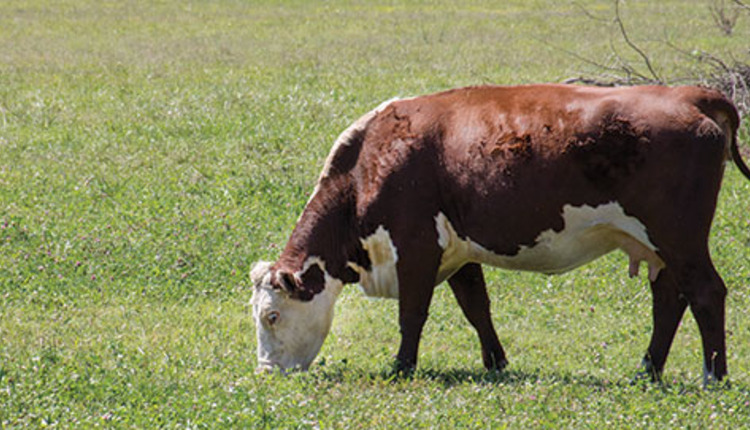The author is a freelance writer from Bozeman, Mont., and has her own communications business, Cowpunch Creative.

Colorado ranching expert Chip Hines (chiphines.com) believes the cattle industry is in dire need of some change. This change, Hines notes, is a switch from today’s high-input, performance-oriented model to a more low-input, managed method focused on net profit per acre. He calls this system “environmentally adaptive management.”
Hines is a well-seasoned and opinionated cowboy who also happens to be quite the author with four books under his belt. In his latest self-published book, Cow Country Essays and a Little Slantwise Logic, he takes a stark and honest look at the current state of affairs in the cattle business offering up what he sees as four must-do solutions to get ranch management back to “keeping it simple” values.
The basis of Hines’ low-input, environmentally adapted ranching philosophy comes down to four fundamental
management principles:
- Calve in sync with your environment
- Feed no or very little hay
- Proper size and type of cow
- Grazing management / improvement
“Well over 75 percent of the possible growth in profitability will come from these four points,” says Hines. “These also have a complementary, compounding effect. Improving one will help the others. When these are mastered, then, and only then, might it be worthwhile to go after a few extra dollars.”
When implementing these principles, Hines admonishes to two mantras: On management, keep it simple. On cows, if one can do it, they all should be able to. He recommends ranchers to be as self-reliant as possible, redefine what they consider to be “efficient,” and maintain an open mind.
Work with nature
According to Hines, net profit will be the determinant of success when it comes to the ranch. However, understanding and adapting to nature’s model will be the basis for this success. Doing so will include changes such as:
- Breeding or purchasing cattle adapted to the environment of a given farm or ranch
- Calving in sync with nature (for example, green grass calving)
- Selecting for the proper size and type of cattle with low milk production and birth weight traits
- Eliminating or greatly reducing hay feeding and other inputs
- Initiating grazing management to mimic nature’s outline
Of all potential changes, Hines says grazing management is one of the major players and a switch that should be made early in the game as this is the easiest and quickest area one can have an effect.
“Grazing management can significantly increase numbers,” says Hines. “Increasing the number of cattle on your given acres is imperative for profit.”
Hines points out implementing proper rest periods will lead to healthier pastures and soil, which in turn will grow more and better forage. Done in suit with reducing cow size, the switch to smaller cows (that produce less milk and have lower energy requirements), allows more cows to be added to the herd further enhancing the carrying capacity improved grazing management brings. Syncing calving season with the forage growth curve further adds to the benefits these changes bring by reducing harvested feed costs.
Start with timed grazing
To learn the basics, Hines encourages producers to take a class or attend a grazing workshop.
“These courses get right to work with what you need to know and only what you need to know,” says Hines. “Comprehending the correct procedures in a class will make it easier to grasp the fundamentals and how to fit everything together for the real learning process, which is on the land.”
Hines urges producers to get away from the longtime industry standard of continuous grazing.
“Though only a small portion of the industry is practicing some variation of timed grazing,” says Hines, “it is becoming universally accepted as the only effective method of grazing to build productivity, increase profits, and truly restore natural soil health.”
Start small by creating multiple paddocks and incorporating frequent moves, this could be as little as a couple times a week to begin. Hines stresses producers should get familiar with how these changes are affecting their pastures and cattle’s body condition before attempting multiple moves per day.
Overall, none of the ideas mentioned in Hines’ latest book are necessarily new or unusual when it comes to making management changes. He gives plenty of examples as evidence to support his philosophies throughout. Where the real value may lie, however, is in Hines’ challenge to producers to take a step back and reevaluate “the way they’ve always done it.”
As any good manager knows, reevaluation on a regular basis is critical for continued success.
This article appeared in the April/May 2016 issue of Hay & Forage Grower on page 12.
Not a subscriber? Click to get the print magazine.

